Promoting ESG Management
Establishment of the Medium-Term Business Plan 2017
The Medium-Term Business Plan 2015 promoted the diversification of the company’s earnings bases as a way of creating a business structure capable of generating stable profit in business sectors other than the domestic construction business. In line with this policy, the company expanded its overseas construction business through M&As and other means, and invested aggressively in the real estate development business, especially in properties for lease; the renewable energy business, including solar power generation; and technical development. As a result, Obayashi Group’s performance took an upward turn on the back of the recovery of the domestic construction market and increasing productivity at construction sites. In addition, almost all the goals outlined in the Business Plan, such as to enhance the company’s financial base, were achieved before the final fiscal year. In FY2017.3, the company’s net sales reached a record high of approximately 1,872.7 billion yen (consolidated, as are the following figures), making it an industry leader for the fourth consecutive year. Operating income, ordinary income, and profit attributable to owners of parent all reached new record levels.
On the other hand, while the Japanese economy was performing well, the global outlook for the business environment was becoming increasingly uncertain due to factors including the United Kingdom’s exit from the European Union (Brexit), the direction of the new Trump administration in the United States, and the prevalence of terrorism. At the same time, technological innovation had become a requirement in various sectors at a faster pace than ever before.
Under these circumstances, the company established the new Medium-Term Business Plan 2017 one year ahead of schedule as a way to maintain and boost the strong performance at the time, seize changes in the business environment as opportunities for growth, and prepare the way for the future with the concerted efforts of the entire Group. In line with the Obayashi Philosophy to realize a sustainable society, the company drew up its Vision for the Future to be accomplished by the 150th anniversary of its founding (2042), which determined the results to be achieved and measures to be taken during the first five years of the roadmap.
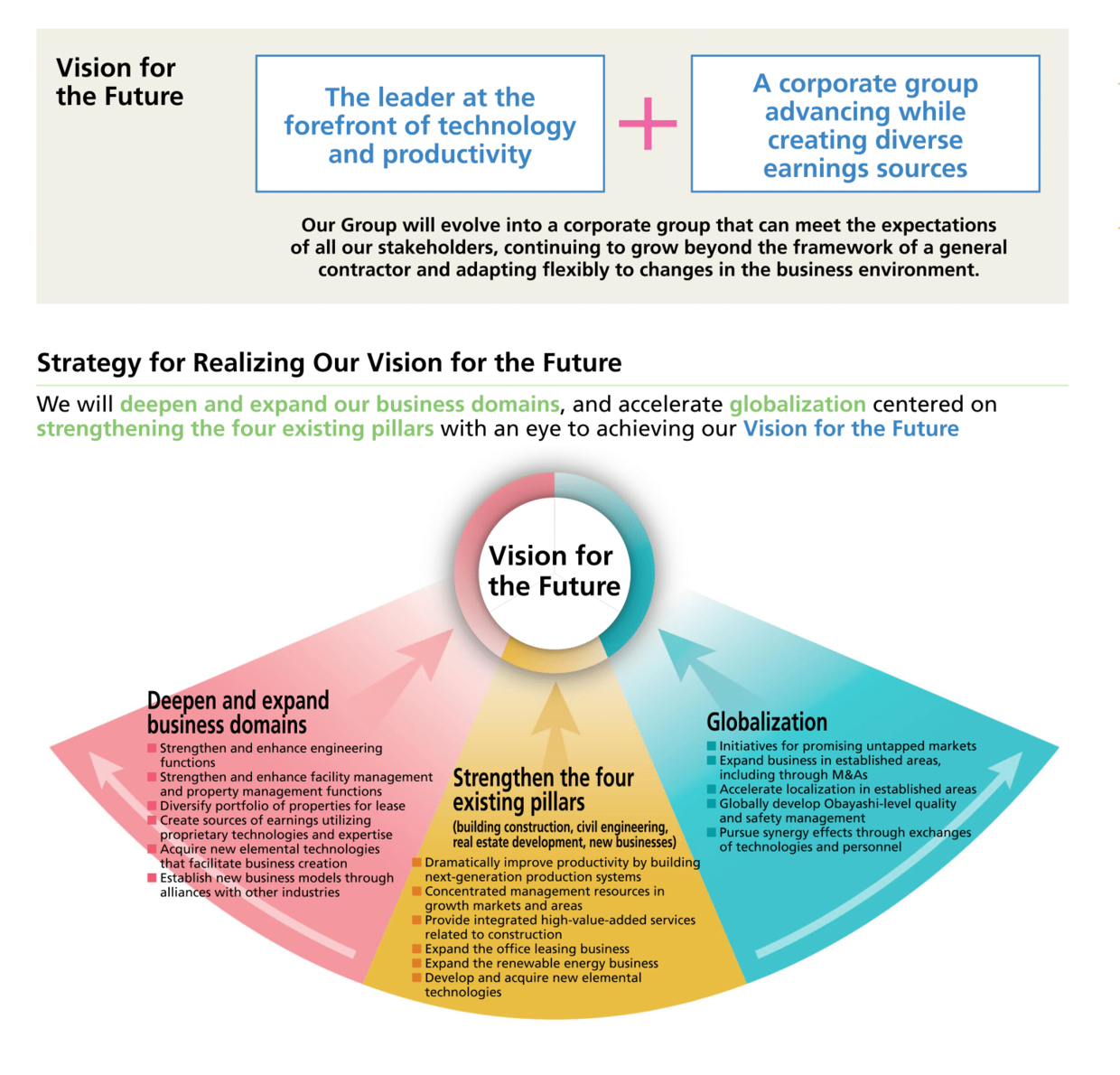
As a first step toward achieving the company’s Vision for the Future, the Medium-Term Business Plan 2017 outlined the basic policies of building a strong management foundation and preparing the way for the future.
The company’s aims for the domestic construction business, which was showing strong performance, were to further increase net sales and income by enhancing its competitive advantages, provide high-value-added services, and improve productivity. Additionally, in the overseas construction business, the company worked to improve profitability by pushing forward with creating local bases and expand business in Oceania and other regions. Moreover, it aimed to widen the scope of the real estate development business by continuing to actively invest in the office leasing business, while also cultivating the new businesses sector by advancing commercialization of renewable energy such as solar, wind, and biomass power generation, and strengthening initiatives concerning PPP projects.
Aside from making systematic and flexible growth investments to promote these businesses and expand their business domains, the company also strove to build a strong management foundation by strengthening equity, reducing interest-bearing debt, and increasing cash reserves to prepare for unforeseen business risks. Meanwhile, the company also created an investment plan to prepare the way for the future, and planned to invest 400 billion yen over a period of five years in the development and acquisition of technologies, human resource development, and the creation of new business models to deepen and expand business domains and achieve globalization, in addition to strategic investments to support these measures.
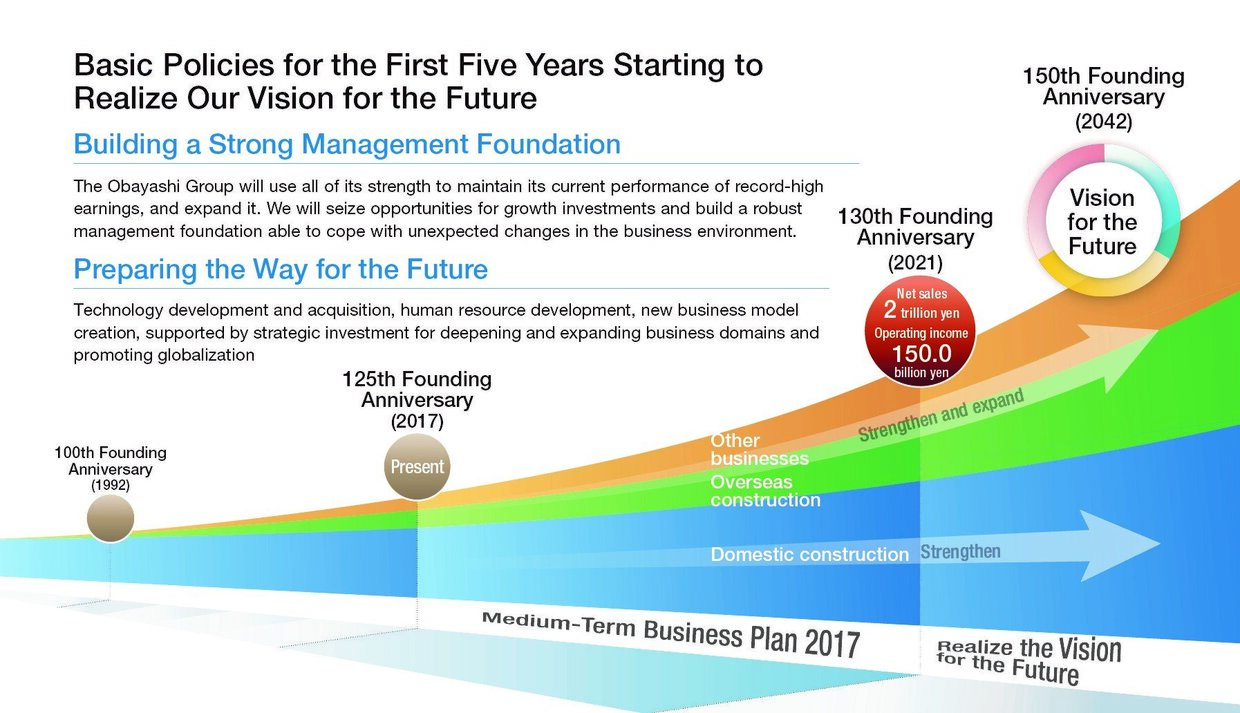
Six ESG Materialities
ESG is an approach that places importance on non-financial aspects (environment, social, and governance) of initiatives in addition to evaluations that focus on financial information, such as performance, when evaluating the potential growth of a company as a basis for making investment decisions. Each company is expected to implement ESG management by determining which ESG-related social challenges it will prioritize based on the strengths and weaknesses of its business and aim to resolve these issues through its business activities. In the establishment of the Medium-Term Business Plan 2017, the company included a policy for ESG initiatives as part of its management foundation strategy.
Environment
Promote efforts to solve global environmental issues in construction and related business activities based on the Obayashi Green Vision 2050, the company’s medium- to long-term environmental vision.
Social
・Provide high quality buildings and infrastructure by constantly improving the Quality Management System and promote the use of ICT at construction sites, technical development, and human resource development.
・Ensure the safety and wellness of workers and further the creation of comfortable workplaces in which diverse personnel can play an active role.
・Actively pursue activities aimed at solving social challenges as a good corporate citizen, including assisting with disaster preparedness, recovery and restoration in the event of a disaster, and working together in coexistence with local communities.
Governance
Enhance corporate governance by improving transparency and sound management and ensuring strict adherence to corporate ethics, and promote constructive dialogue with shareholders.
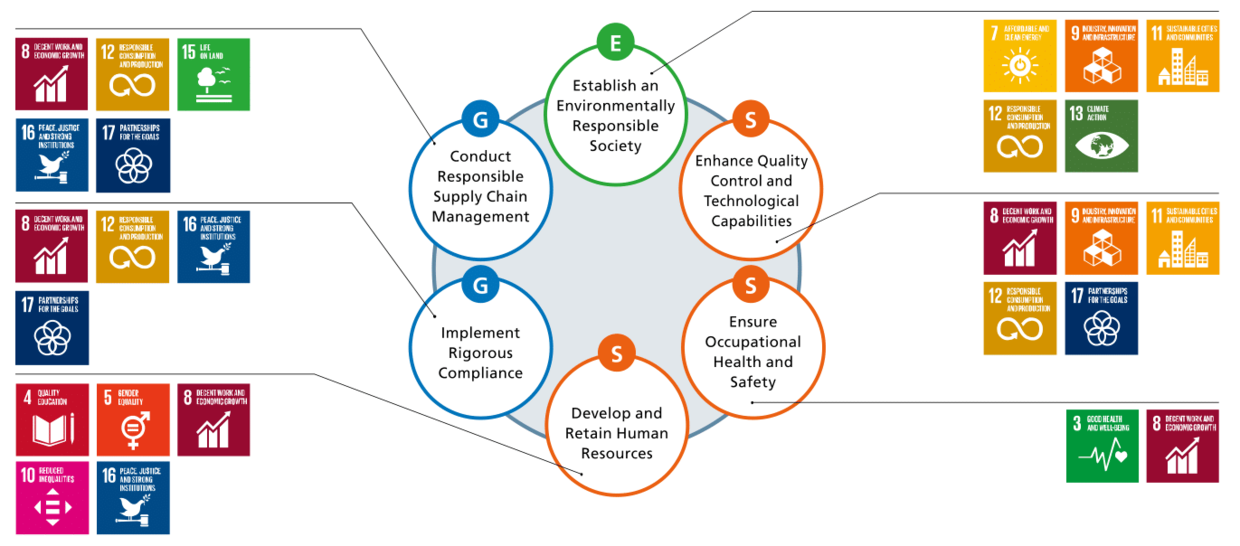
Based on this management foundation strategy, Obayashi selected six ESG materialities from a diverse range of social challenges. By linking these materialities to the SDGs and working to achieve them, the company made it its aim to realize a sustainable society, as stated in the Obayashi Philosophy, and enhance the enduring corporate value of the Obayashi Group. When selecting these materialities, the company investigated various global ESG challenges from the viewpoint of positive aspects that could be expected (creation of business opportunities), and negative aspects that the company hoped to reduce (loss of competitiveness) through initiatives to solve these challenges. The importance of the materialities to the Group was also evaluated. Further evaluation involved looking at how solving each challenge would contribute to or impact the planet, starting with the company’s stakeholders, including shareholders, customers, and suppliers. These results were then consolidated to decide the materialities.
Establishment of Action Plans and KPIs
As a way of steadily propelling ESG management, Obayashi Corporation laid out an action plan and Key Performance Indicators (KPIs) for each materiality based on its evaluation of the impact of each on the Obayashi Group.
In the Medium-Term Business Plan 2017, the company defined its Vision for the Future as being “the leader at the forefront of technology and productivity” and “a corporate group advancing while creating diverse earnings sources.” To achieve this vision, the company also set forth strategies to strengthen the four existing pillars and achieve globalization, as well as deepen and expand business domains. The company also devised specific action plans to solve the six materialities with respect to the promotion of ESG management. ESG management aims for sustainable corporate growth and the realization of a sustainable society as a prerequisite for that growth. Under these action plans, the company hopes to achieve the KPI targets using the PDCA cycle, and it conducts yearly reviews to confirm the extent to which the targets have been achieved and make revisions as necessary.
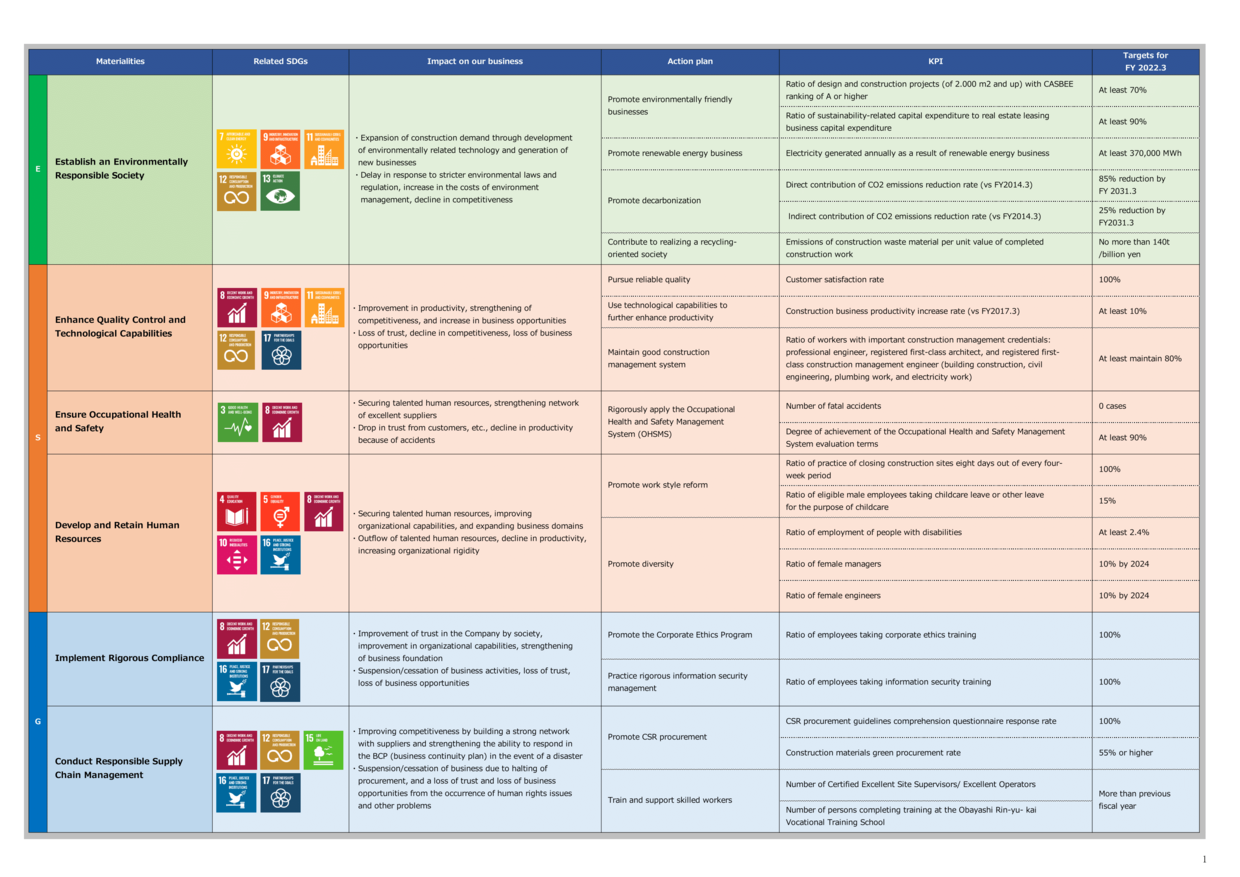
Update of the Medium- to Long-Term Environmental Vision for Achieving a Sustainable Society—From “Green” to “Sustainability”
In 2011, Obayashi Corporation set out its medium- to long-term environmental vision, Obayashi Green Vision 2050. Since then, the company has been working to solve environmental problems in its goal to foster an environmentally responsible society. In June 2019, the company developed the vision further, renaming it Obayashi Sustainability Vision 2050 and making it the company’s long-term vision. The new vision reflected factors such as changes in social conditions and the business environment, the importance of ESG as a management foundation, and the need to contribute to meeting the social challenges as expressed in the SDGs.
This long-term vision defined the 2050 vision as a state of having realized sustainability of “the planet, society, and people” and plotted the direction in which the Obayashi Group should develop its businesses using the backcasting method. Realizing a sustainable society founded on harmony between the planet, society, and people is considered absolutely essential for the company to continue doing business into the future. It thus decided to pursue this vision alongside working toward the sustainability of the Obayashi Group. To this end, the company set out three goals for 2040–2050: decarbonization for achieving zero carbon dioxide emissions across the entire Obayashi Group, providing valuable spaces and services to build a better society for all, and co-creating a sustainable supply chain in partnership with everyone involved in the company’s business.
Of these goals, decarbonization in particular has become a global challenge that can no longer be ignored. In October 2020, the Japanese government pledged that Japan would become carbon neutral by 2050. It established the Green Growth Strategy in December that year, and in April 2021, it announced that Japan was setting a target to reduce greenhouse gas emissions by 46 percent in fiscal year 2030 from the fiscal year 2013 levels. As a leading sustainability company, Obayashi Corporation pushed forward with efforts to reduce carbon dioxide emissions, as stated in the Obayashi Philosophy. Specifically, the company worked on the development of technologies including Zero Energy Building (ZEB) and Clean-Crete, the first low-carbon concrete in Japan to be certified under the J-Credit Scheme. It also poured its energy into the renewable energy business to flexibly develop the business with an eye toward future trends.
Obayashi also aimed to contribute toward the sustainability of “the planet, society, and people” by steadily advancing initiatives to achieve targets across the entire Obayashi Group and its supply chain. Furthermore, to prepare the company to realize its 2050 vision, it established three areas of business development: 1) social-friendly businesses and services, 2) lifecycle management of infrastructure and communities, and 3) technology and business innovation for the future society. Existing and new businesses targeted these areas.
In the next Medium-Term Business Plan, which is centered on ESG management, the company intends to tackle the challenges raised in the Obayashi Sustainability Vision 2050 as its most important priorities. The topics of diversity and inclusion, however, are also of high interest to society, and so, in April 2021, the company established the new Diversity & Inclusion Promotion Department under the Corporate Strategy Division in order to quickly develop a strategy to address this challenge.
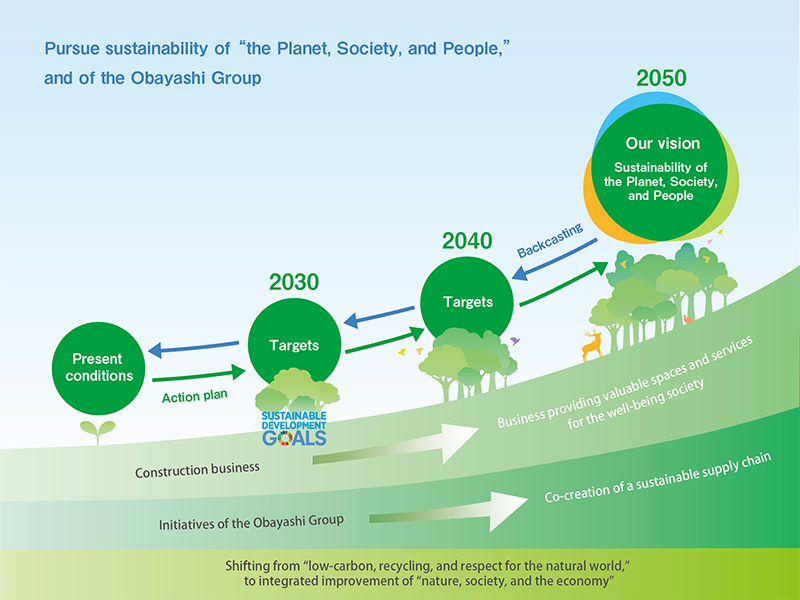
Environmental Technology and Efforts to Improve Safety and Quality
The Environmental Technology Department, which was formed in 2008 under the Technology Division, handled a wide range of research areas spanning soil and resource recycling, biotechnology, wind resistance, acoustics, airflow, and fire prevention. In April 2017, the department was reorganized into two separate departments according to research content: the Environmental Engineering Department (research on the natural environment, soil and resource recycling, and the use of biotechnology) and the Urban Environmental Engineering Department (research on the urban environment, wind safety, acoustics and the electromagnetic environment, airflow and the indoor environment, fires, and safety). This was done to further strengthen the company’s framework for research and improve efficiency in the operation and management of the departments.
Previously, company-wide management related to safety and the environment had been handled by the Safety & Environment Planning Department, while the Civil Engineering and Building Construction Divisions dealt with company-wide management concerning product quality. However, in light of the frequent occurrences of disasters and accidents in recent years, as well as the high number of cases of quality fraud in other industries, the company decided to centralize its management and guidance systems related to safety, quality, and the environment under a dedicated division, thereby enhancing these functions as an all-encompassing system that covers everything from the establishment of management standards to detailed guidance on site. This took the form of the new Safety, Quality & Environment Division, which was established in March 2019 to handle company-wide management concerning safety, quality, and the environment. In FY2020.3, the company instituted Quality Week (November 1 to 15) with the goals of raising awareness of quality issues and further promoting quality control activities. The following year, in 2020, it introduced Environment Week (June 1 to 7) to raise awareness of environmental issues and further promotes environment conservation activities.
In June 2019, the Monozukuri Training Center Phase I Building (building frame, interior, and equipment) was completed at the East Japan Robotics Center, and training on architecture and facilities began in July. Following this, the Monozukuri Training Center Phase II Building (exterior, waterproofing) was completed at the center in February 2020, and training began in October. Training is being conducted in conjunction with Group subsidiaries and seconded or dispatched employees to improve quality.
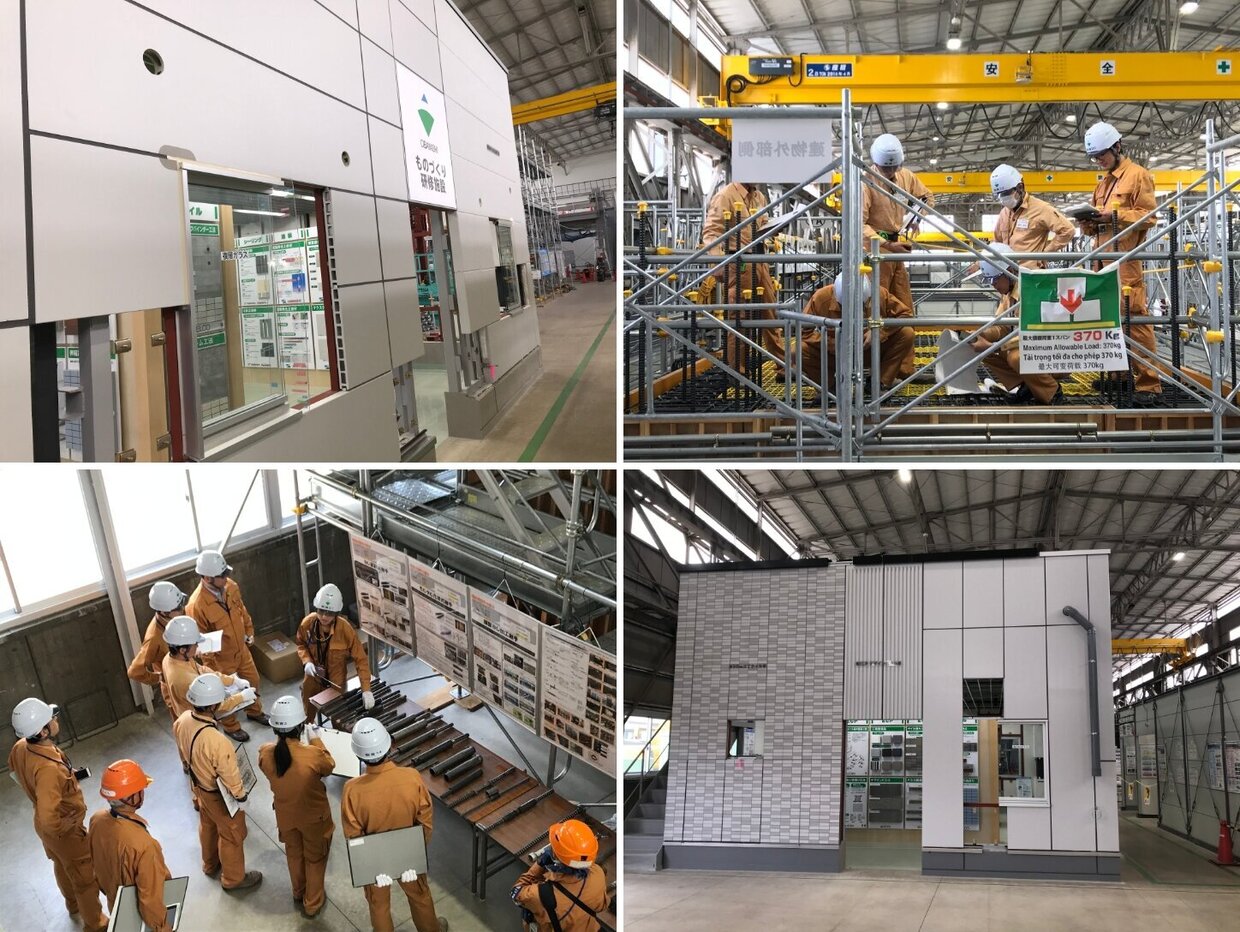
Contributing to the SDGs
Today, major disasters caused by global warming have been occurring at a higher frequency in all regions of the world. Unless all companies of the world conceive of and practice their business activities with sustainability as a prerequisite, not only the survival of businesses, but the fate of society itself also hangs in the balance.
The construction industry, in particular, can be said to have tremendous responsibility, as it is involved in all aspects of human life and economic activity, including infrastructure, communities, housing, and offices, and its business itself is directly linked to the goals of the SDGs. On the other hand, since a single project is intrinsically connected to several of the 17 goals of the SDGs, it is also true that many of the sectors making up the construction industry can make a contribution toward achieving the SDGs.
For example, the wind power generation business, currently being developed by the company, can fulfill Goal 7: Affordable and Clean Energy, Goal 9: Industry, Innovation and Infrastructure, and Goal 13: Climate Action, as well as Goal 12: Responsible Consumption and Production and Goal 17: Partnerships for the Goals. Further, by promoting wooden architecture, the company can also contribute to Goal 11: Sustainable Cities and Communities, and Goal 15: Life on Land.
In this way, each of the company’s businesses will serve as a specific roadmap to achieve the SDGs.